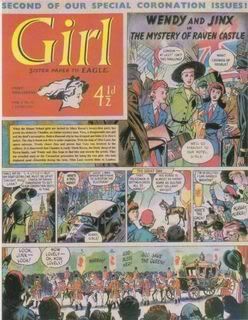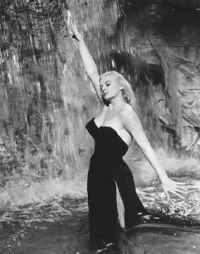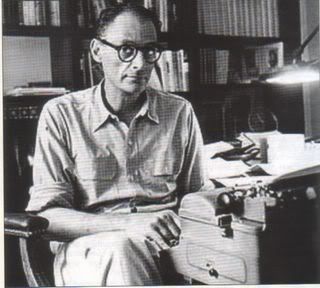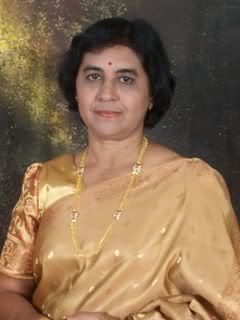
Pictured is D. Devika Bai, a former teacher turned novelist who successfully authored her debut historial fiction in 2005 titled The Flight of the Swans, published by Monsoon Books Singapore, 320pp, S$23-50 (MYR49-90).
For content information and purchase details, please scan to end of this entry.
The Flight of the Swans was nominated for the Commonwealth Writers' Prize 2006 (for the SE Asia & South Pacific regions. Bai has also been featured in Sawnet's (South-Asian Women's NETwork) bookshelf section and an extract from the first chapter of The Flight of Swans was published in DIMSUM (Asia's literary journal, volume 11.
Here is a day in the writing life of Ms. D. Devika Bai, who is now working on her second novel, with a resolution to completing it by year-end.

As told to Susan Abraham by D. Devika Bai.
"I've chosen the Indian Ocean slave-trade as the subject of my second book. Not much has been written about it to this present day from a fictional sense. Yet, it's a theme that existed during the same era as the trans-Atlantic slave-trade. I narrate my story through the voice of an Indian gypsy-girl. By the way, Indian gypsies are another subject rarely explored on, in English fiction.
"When I started writing The Flight of the Swans 9 years ago, I did not own a computer with Internet facilities. There were also no cybercafes in Rawang, Selangor, where I live.
"My relatives in Chennai, India kindly sent me material I needed for research. As for the rest of the bits, I delved into my own book collection.
"Of course now for the second book, I use the Internet a lot. The bulk of research has been done but I daresay, I still have to look up a fact or two when I'm writing.
"As they say, fact is itself stranger than fiction. Already, I've worked on my story for more than 2 years. I'm two thirds done and am trying to finish it by 2007 if I can.
"I've always been a notorious homebody so even with a title like published author for The Flight of the Swans, my life still hasn't changed all that much.
"I don't go to town unless absolutely necessary. I only visit relatives when a function comes on or otherwise, ocassionally. I've lost touch with most of my friends and colleagues, except for those who reside in the town where I live. And I know that they're presently delighted with my book.
"Anyway I'm happiest when I'm writing and that's what matters to me.
"There was a flurry of media interviews just before and after the official booksigning events for The Flight Of The Swans in July, 2005. I find it exhilarating but humbling to be in the public eye."I must admit that being a published author has definitely opened up possibilities for my writing. It's also given me a real sense of elation and achievement.
"However I work more from the home now especially that I'm writing my second novel.
"I wake up at 7.30am. My breakfast is always simple and fuss-free. A thosai, chappati or slices of bread with butter. My plan is to then catch up with the BBC news on television and to skim through the headlines of the morning papers. That's followed by a variety of household chores that could be anything from sweeping, dusting or mopping. This lasts for about an hour. I'm very lucky that I don't have to cook. Two wonderful people handle this for me. My mum and my sister-in-law.
"I start writing everyday around 9.00am. The only compulsory ritual here that I engage in is to sharpen my pencils fastidiously beforehand. That's because I write in longhand.
"There is of course, a clear difference between writing a book and what teaching used to be for me. As you know, writing is far more exhausting. It demands intense concentration that is focussed on a single page at a time whereas in the classroom, you could easily divide your attention with students, books and the blackboard.
"Anyway, for the next three hours I become completely immersed in this story that I'm busy creating. I don't set any kind of target for the number of words or pages to be finished at one sitting. I take it slow, mulling over words and sentences. I happily lose myself in this world. And I don't wait for inspiration. Routine and discipline do it for me.
"Still, if you mention inspiration on the offside, my muse has to be my late father. He was an avid reader and will always stay my hero.
"The first story book I ever read when I was a child was Lassie. My Dad bought the book for me. During my growing years, I started reading the English Classics and my father's collection of Reader's Digest condensed novels and World War II epics. Then, I went on to read the Pulitzer Prize-winning The Good Earth by Pearl S. Buck (borrowed), and A Town Like Alice (a gift)."Both novels had me hooked!
"Once I started work as a teacher, there was no stopping me from buying my own novels and becoming a voracious reader. Though I've given away all my old novels now, I still have with me The Good Earth which I treasure.
"Writing, for me came as a natural consequence of reading. My book collection now consists of some classics and contemporary novels. I also own books on philosophy & religion, mythology, culture and history. "Anyway to come back to my morning, when the writing gets a bit overwhelming, I'll confess to flitting out of this new door to grab a cup of coffee. For awhile, I'll admire the red and white hibiscus shrubs outside my window and listen to the birds twittering around the bushes.
"This is easy for me as my antique writing desk is stationed in a corner of my bedroom, right next to the window.
"On it are my writing material, dictionaries, files, a calendar and a-clock-and-pen-holder. I also have a very old greeting card propped up beside the clock. There's a reason for this. The pictures on the cards are coloured in metallic shades and I keep it especially for a silvery dove that it depicts. To me, that dove symbolises all that's good in the world.
"I stop for lunch at 1pm. It's always rice and a curry with a vegetable selection on vegetarian days which are for me, every Tuesdays, Fridays and Saturdays. On other days, I'll have fish and meat. Lunch is followed by poring over the newspapers and a siesta.
"I'll have my tea with biscuits and cakes. Then I'll settle for any one of my favourite hobbies. This could be anything from pottering in the garden to cleaning and polishing the family heirlooms. Some of the ornaments are more than a century old.
"I also enjoy listening to songs and tunes that command a Waltz rhythm, or an Indian or Latin American beat. Besides, I have a penchant for classic Indian films or even the old Oscar-winning Hollywood ones.
"After a spell of these, it's back to writing until dinner time. I wind up my day, watching my favourite soaps and catching the midnight news on tv. "I would recommend for any aspiring author who wants to write in a specific genre of English fiction, to read several books by other authors who write in this field. And to never ever give up looking for a publisher.
"Today, I nestle future ambitions of meeting with other authors, seeing my novel The Flight of the Swans adapted for either the small or big screen and especially this... To ride on the Singapore-Kunming Express when it's completed. You see, the railways is very much in my blood as I have had three generations of my family working for the Malayan Railways. This stretches all the way back to the time of my great-grandfather."
 ISBN: 981-05-2367-X
ISBN: 981-05-2367-X
Available for next day despatch from
Monsoon Books, Singapore (please see link at start of post)
& from Amazon Online.
Set in British Malaya and India, The Flight of the Swans is an expansive family epic with a war theme revolving around the vision of a flight of swans or a bird in solitary endeavour that signals a cursed Captain and his family's hurried escape from the hands of the British. This, to face hardships in another land as well as hopeful dreams.
Family upheavals, mangled from a wounded political and historical landscape as well as sibling rivalry for the hand of a beautiful courtesan, hold reflection on a new brand of literary Indian writing in Malaysia that rests on ambitious history and vivid description of lives lived and lost through circumstances and bad decisions. This is a story that deals with the beautiful, the exotic and the tragic.
Photograph is author's own.
Labels: D. Devika Bai, Malaysian Novelist, The Flight of the Swans
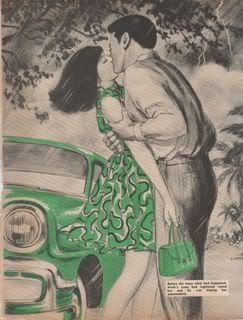




 ISBN: 981-05-2367-X
ISBN: 981-05-2367-X